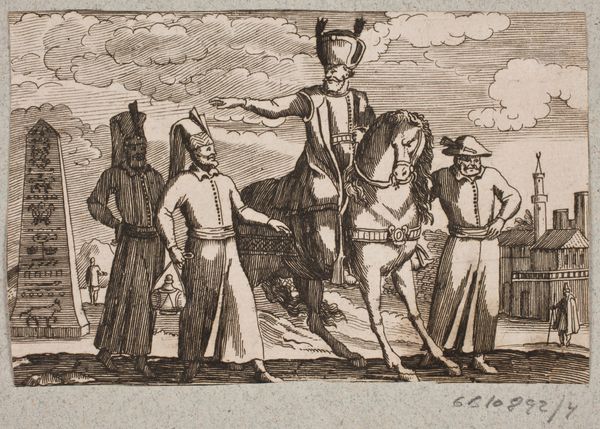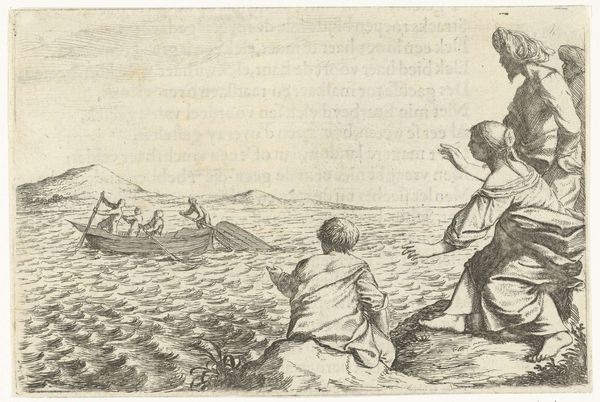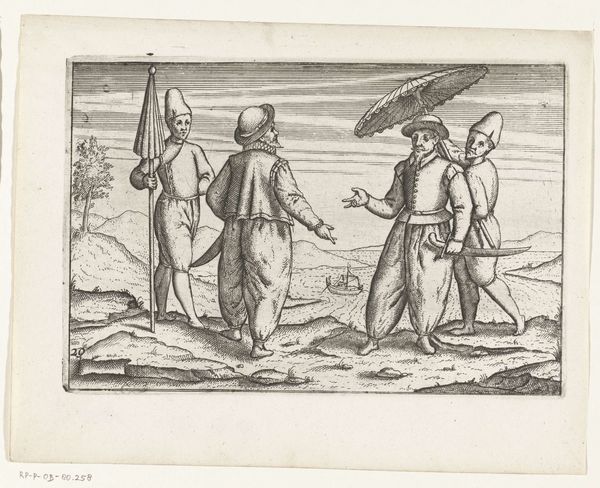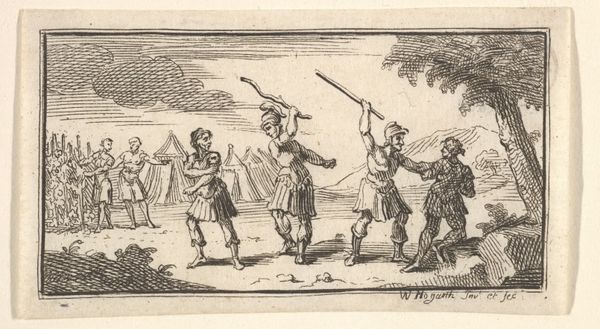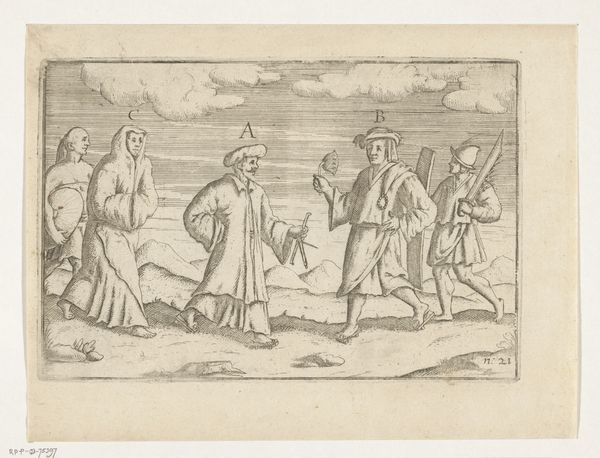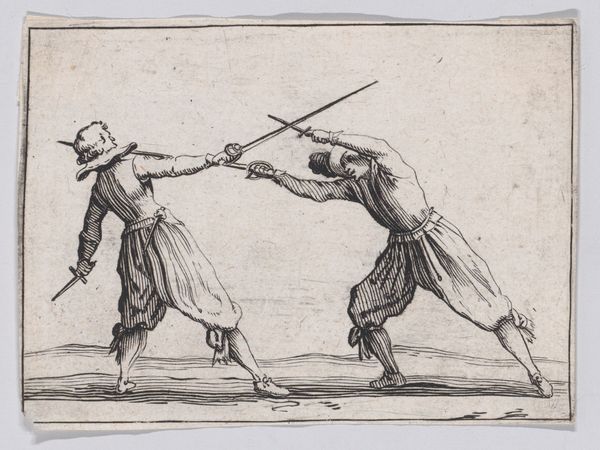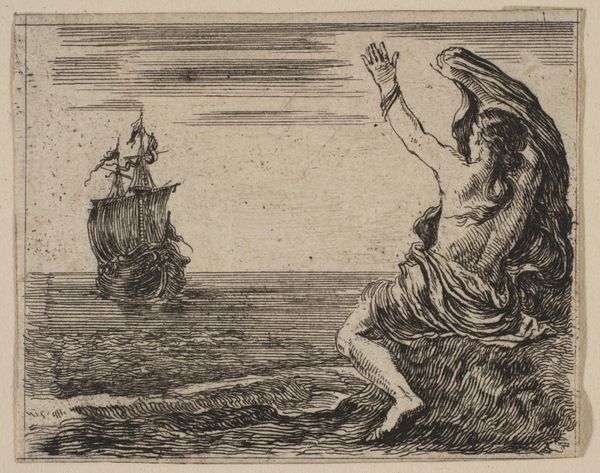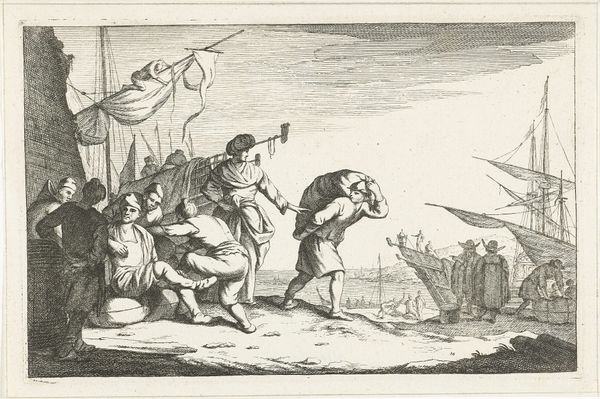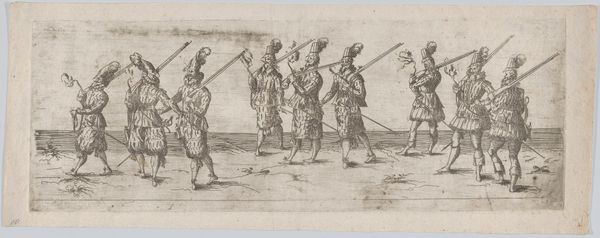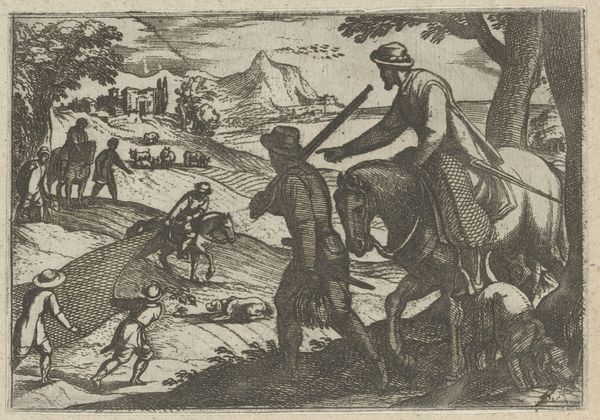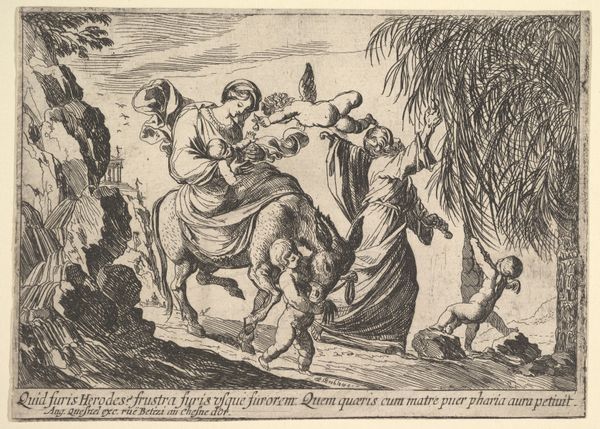
Five Standing Muscovites (Aubry de La Mottraye's "Travels throughout Europe, Asia and into Part of Africa...," London, 1724, pl. 313) 1723 - 1724
0:00
0:00
drawing, print
#
drawing
#
light pencil work
#
pen drawing
#
mechanical pen drawing
# print
#
pen sketch
#
pencil sketch
#
old engraving style
#
personal sketchbook
#
pen-ink sketch
#
men
#
pen work
#
pencil art
Dimensions: sheet: 2 11/16 x 4 1/4 in. (6.8 x 10.8 cm)
Copyright: Public Domain
Curator: William Hogarth produced this print, titled "Five Standing Muscovites," between 1723 and 1724, now here at The Met. It comes from Aubry de La Mottraye's "Travels throughout Europe, Asia and into Part of Africa...". What strikes you most about this work? Editor: The most immediately striking thing is the linearity and detail achieved with what looks like pen and ink. It has an almost academic quality in the careful hatching, yet retains a certain raw, sketch-like feel. A mix of formality and spontaneity, visually. Curator: It’s fascinating to consider this work as a component within a larger travel narrative. Hogarth, although most celebrated as a painter and engraver, contributed significantly to the public understanding of different cultures through prints like these, capturing the West's imagination about faraway lands. Editor: Agreed, one cannot ignore the figures’ distinctive garments! The varying textures and how light interacts—it's meticulously done, using cross-hatching and careful stippling. It adds dimensionality to figures that would, without it, appear very flat. Curator: These sartorial details offered early 18th-century viewers a window into Muscovite society, showcasing status and perhaps even specific roles through their attire. It’s a good reminder that early printed images greatly shaped the visual language around understanding foreign peoples. Editor: Right! What also catches my attention are the landscape's almost gestural depictions in contrast to the precision dedicated to clothing. Mountains morph into simple, slanting lines. This juxtaposition between the specificity of dress and almost cursory backgrounds creates a bizarre sense of space. Curator: Consider the institutional context. Hogarth created this print, not in isolation, but for widespread consumption, aiming to both educate and entertain. Its placement in a travelogue aimed to authenticate a specific worldview on early 18th century Russia. Editor: Understanding the role of the work’s reproduction within this printed material does contextualize this more clearly, providing social currency in those spaces that the work otherwise lacks when decontextualized. Thank you for making these historical insights. Curator: My pleasure!
Comments
No comments
Be the first to comment and join the conversation on the ultimate creative platform.
